Japanese Prints, Ukiyo-e in Edo, 1700-1900
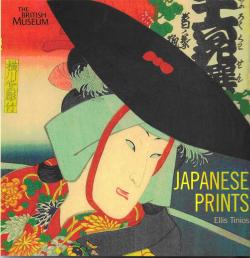
Ellis Tinios
British Museum Press, 2010
143 pages including index
numerous illustrations in colour
ISBN 978-0-7141-2453-7, £14.99
Review by Sir Hugh Cortazzi
The British Museum has an outstanding collection of Japanese prints (ukiyo-e). This book draws on the Museum’s extensive holdings and is an introduction to the Japanese prints in the Museum. In choosing the prints to use as illustrations Dr Tinios has tried to select some of the less well-known prints in the collection. This adds significantly to the interest and value of this book.
This book is not a chronological history of ukiyo-e and it does not claim to be comprehensive, but it is a fascinating survey of important aspects of Japanese prints. Dr Tinios’s study is confined to Edo prints and does not, for instance, cover Osaka prints. After a discussion of the reception and appreciation of ukiyo-e in the West from 1860 to the 1910s including the influence of Japanese prints on post-impressionist artists, Dr Tinios gives a detailed account of how Japanese prints were made. The following triptych by Kunisada Utagawa (歌川 国貞) shows the processes, although the artisans would not have been the beauties depicted here:
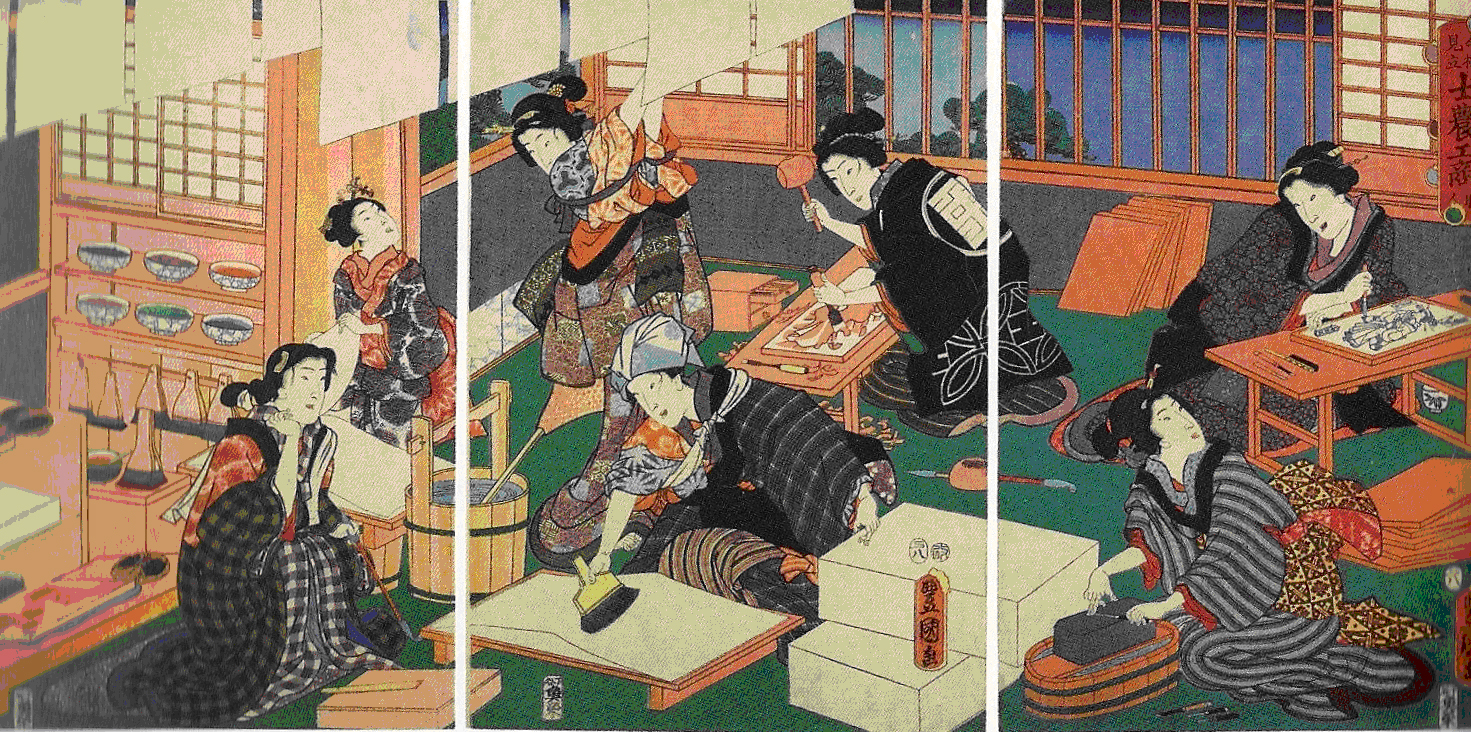
Dr Tinios also explains the way in which Japanese prints were subject to censorship. One print by Utamaro Kitagawa (喜多川 歌) shows Hideyoshi Toyotomi (1530-98) holding the wrist of a page boy in feminized dress. The censors would have seen this as veiled criticism of the shogun. This print was issued without a censor’s seal and Utamaro and his publishers were duly punished by the authorities:
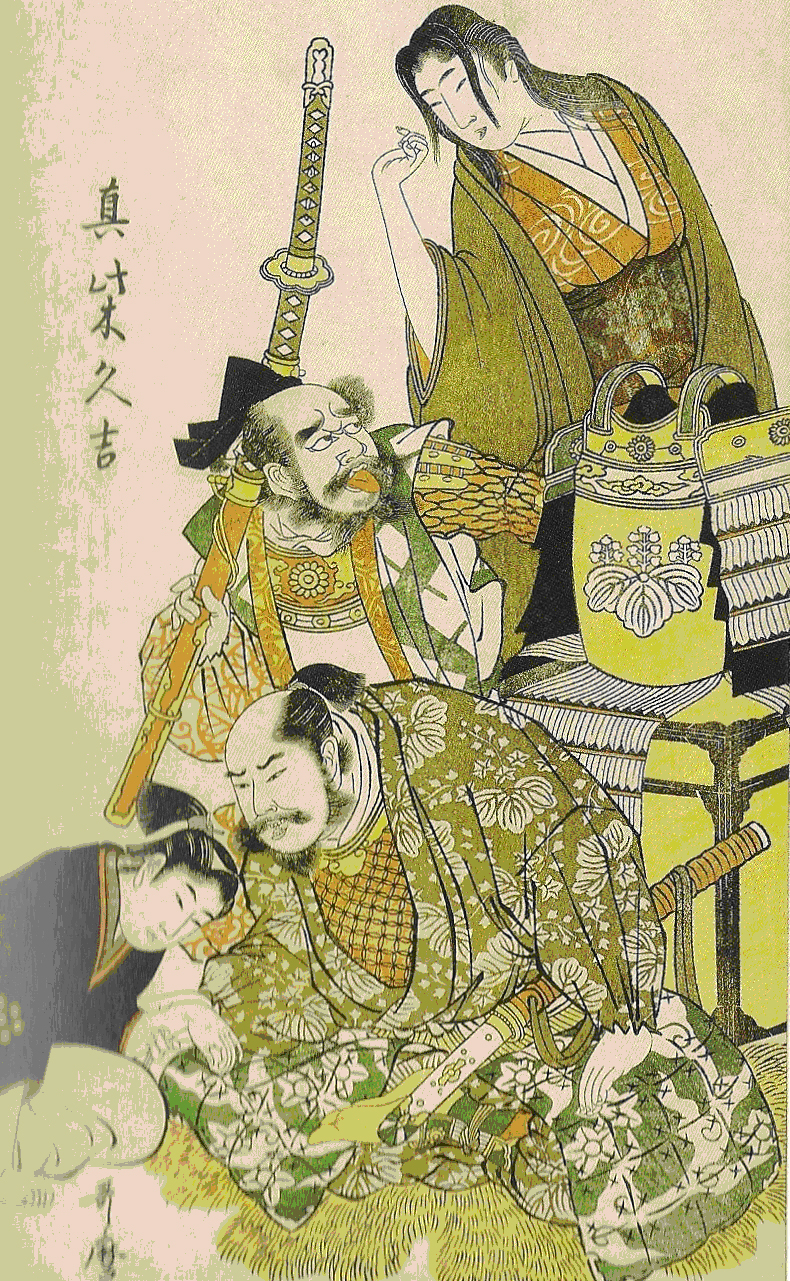
Dr Tinios then discusses Japanese prints in four groups. The first group to which he devotes the largest space is that of actor prints. The following images (left) of two actors dressed as lovers by Shunshō Katsukawa (勝川 春章) and (right) of an actor dressed as a prostitute under an umbrella by Kiyomasa Torii II are striking:
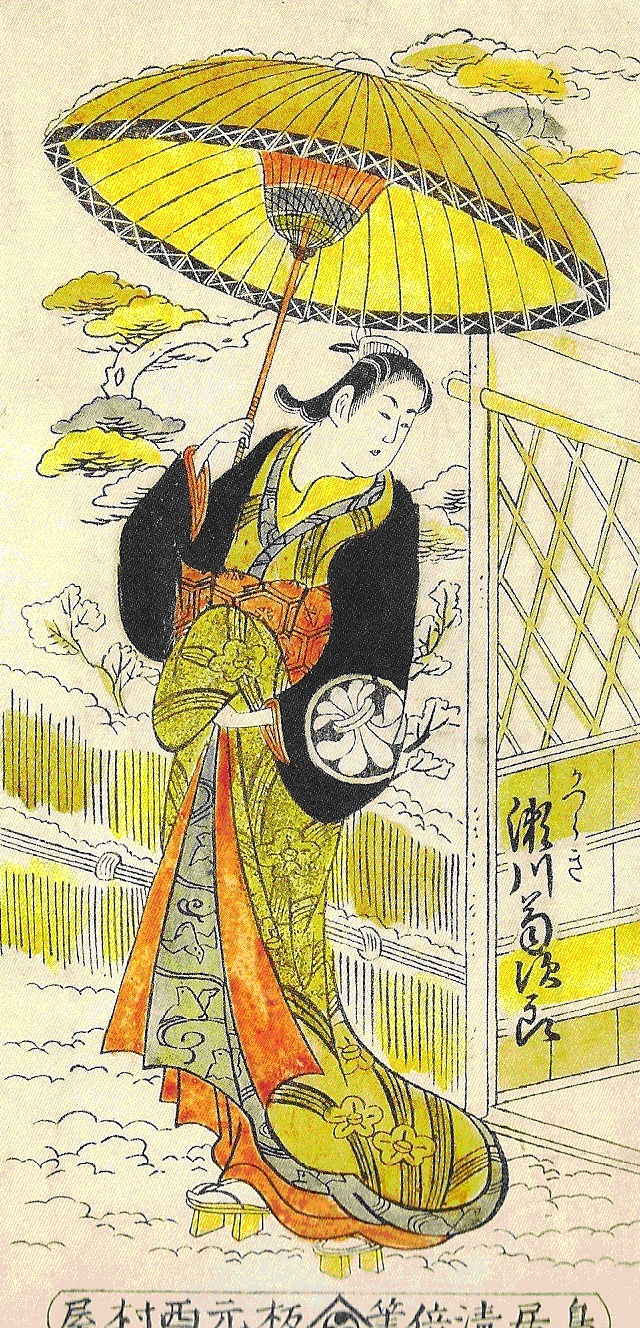
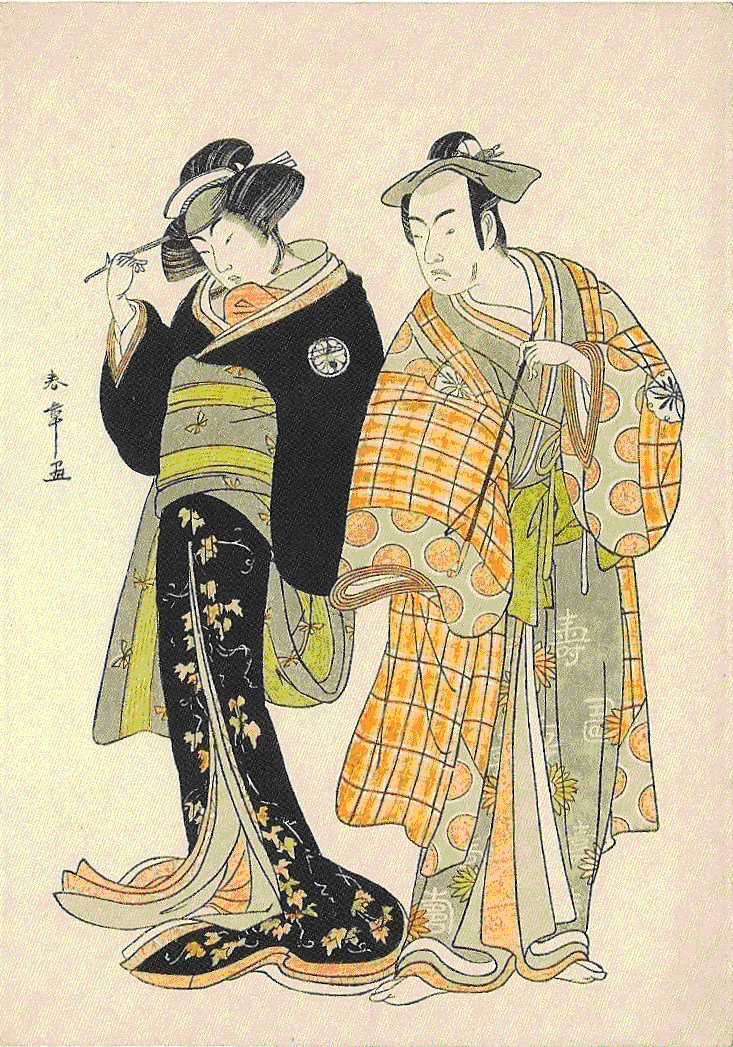
I particularly liked the following two actor prints. The one on the left is of an actor representing a robber by Shun’ei Katsukawa and the print on the right is by Sharaku Toshūsai (東洲斎写楽 – one of my favourite Ukityo-e artists):
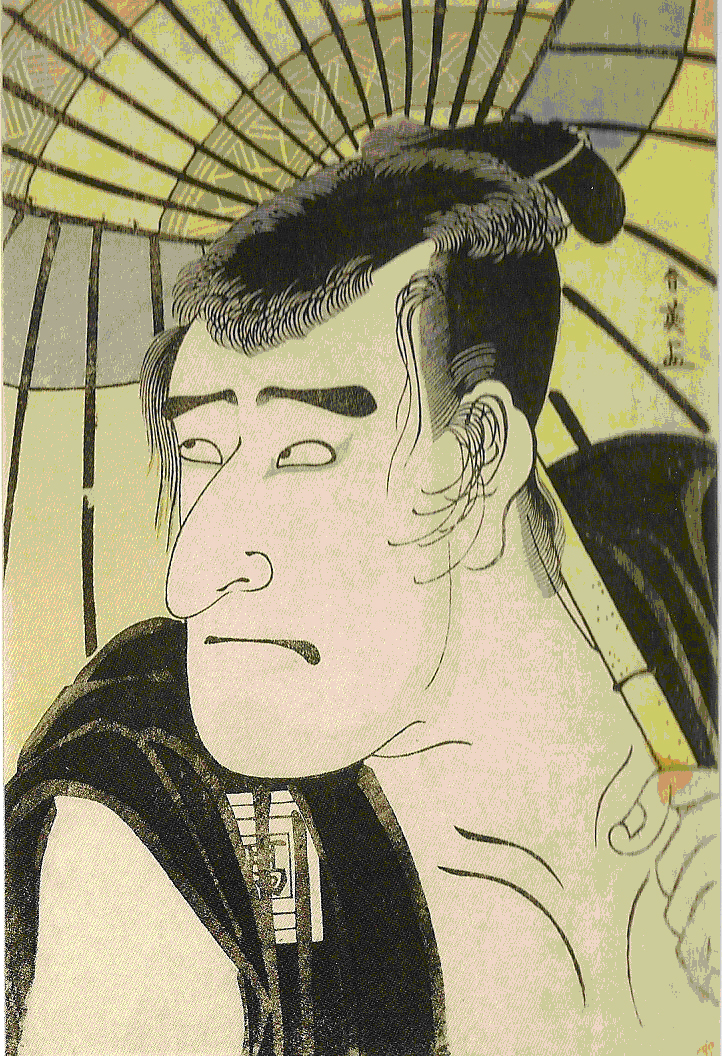
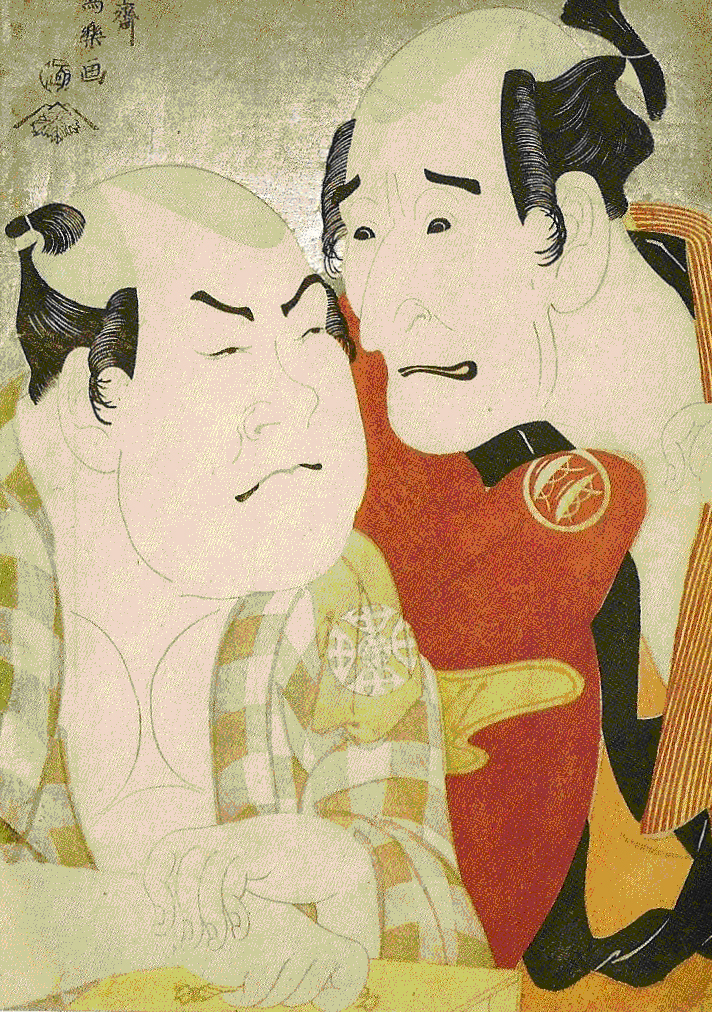
The next group of prints discussed by Dr Tinios is that of “beauties.” He likes particularly these very fine prints by Shunchō Katsukawa (勝川 春湖):
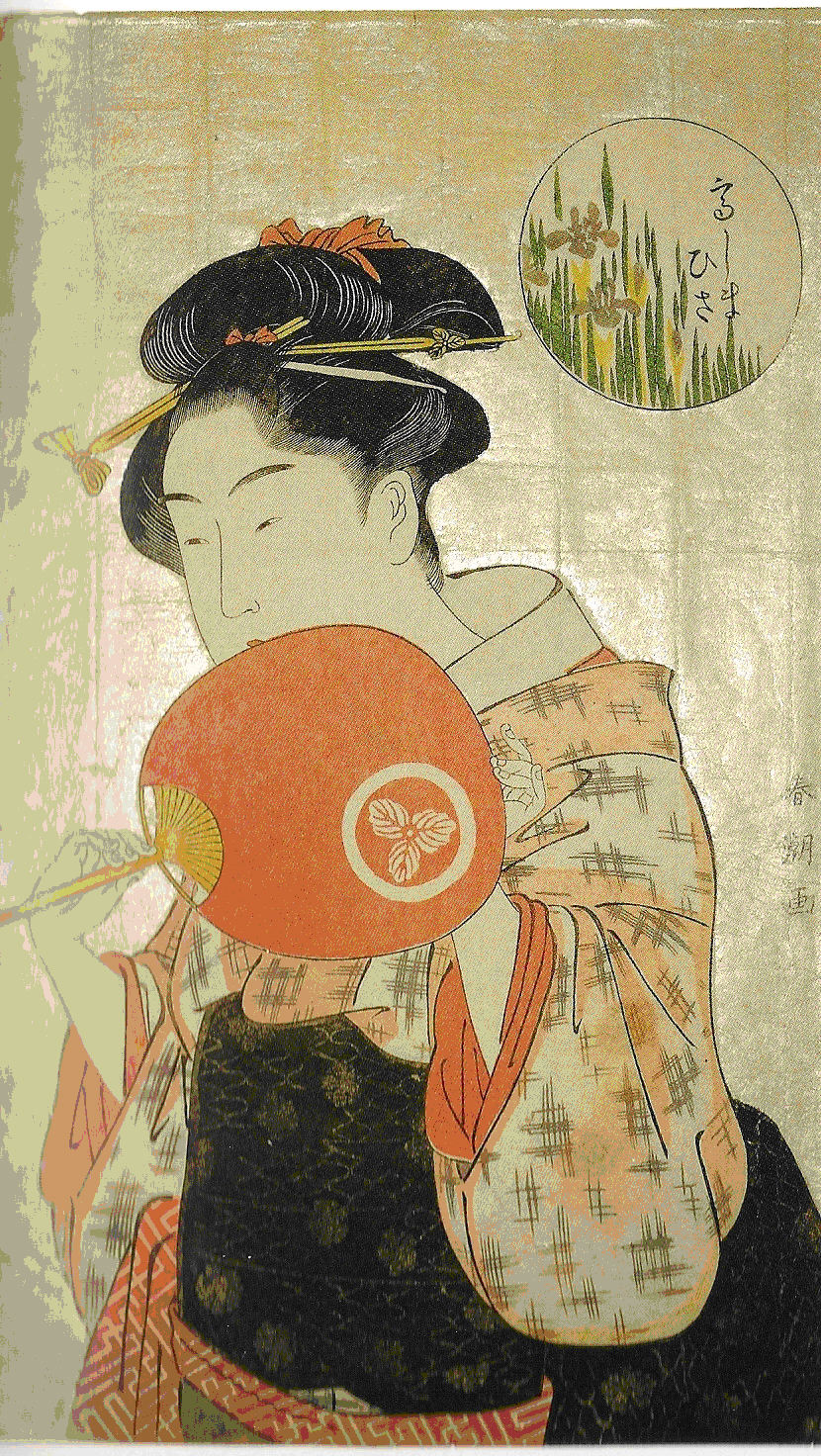
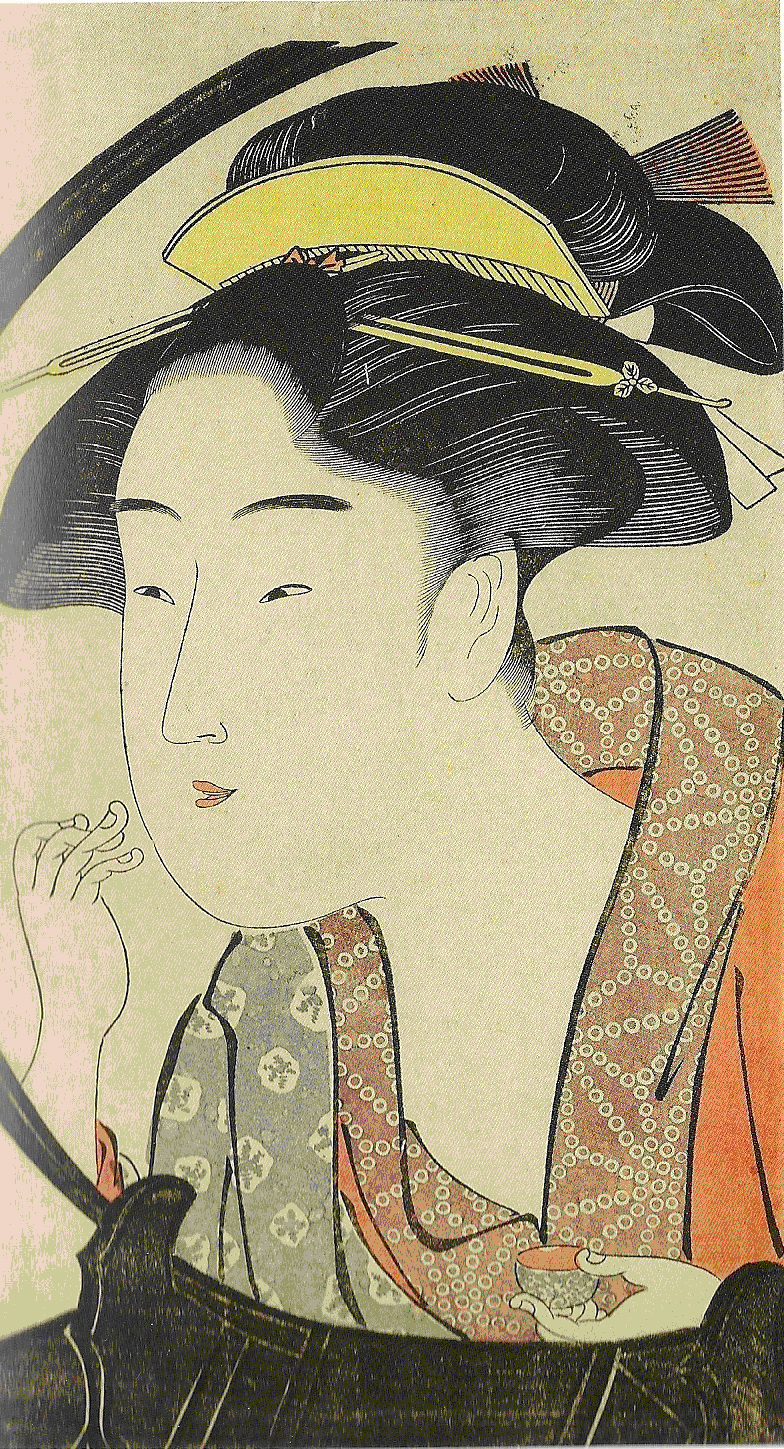
His next section is devoted to landscape prints. The following print is one of Hiroshige’s prints in his series of thirty-six views of Mt Fuji (not as well known as Hokusai’s series, but a striking image):
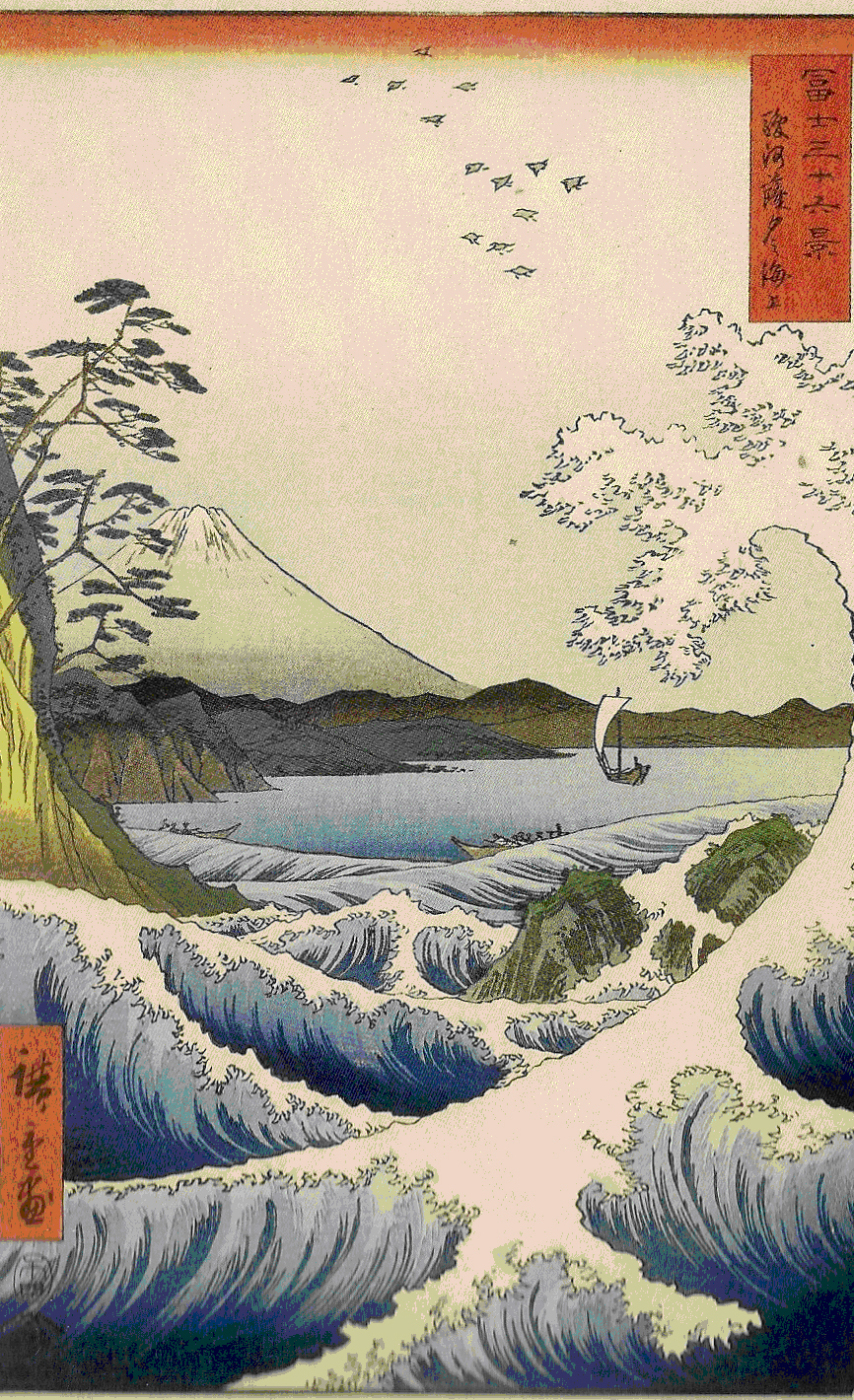
The following print by Toyoharu Utagawa of an imagined port in South Holland is an example of a print based on European engravings which uses western perspectives:
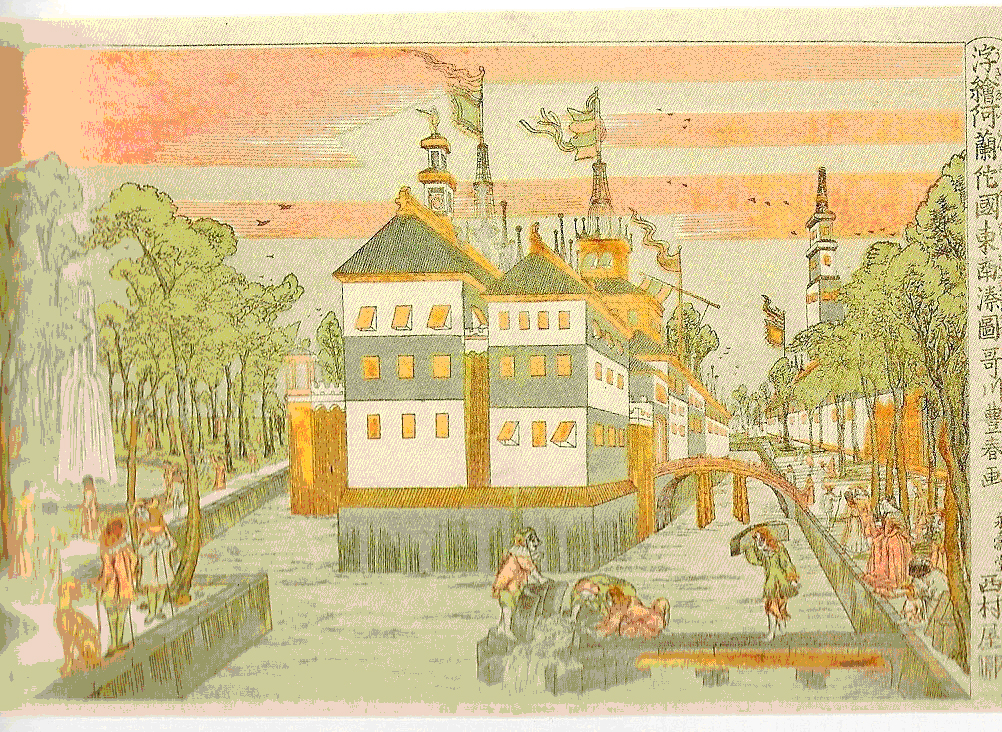
Here is another landscape by Toyokuni Utagawa II (歌川豐國), who is less well known as a master of this genre:
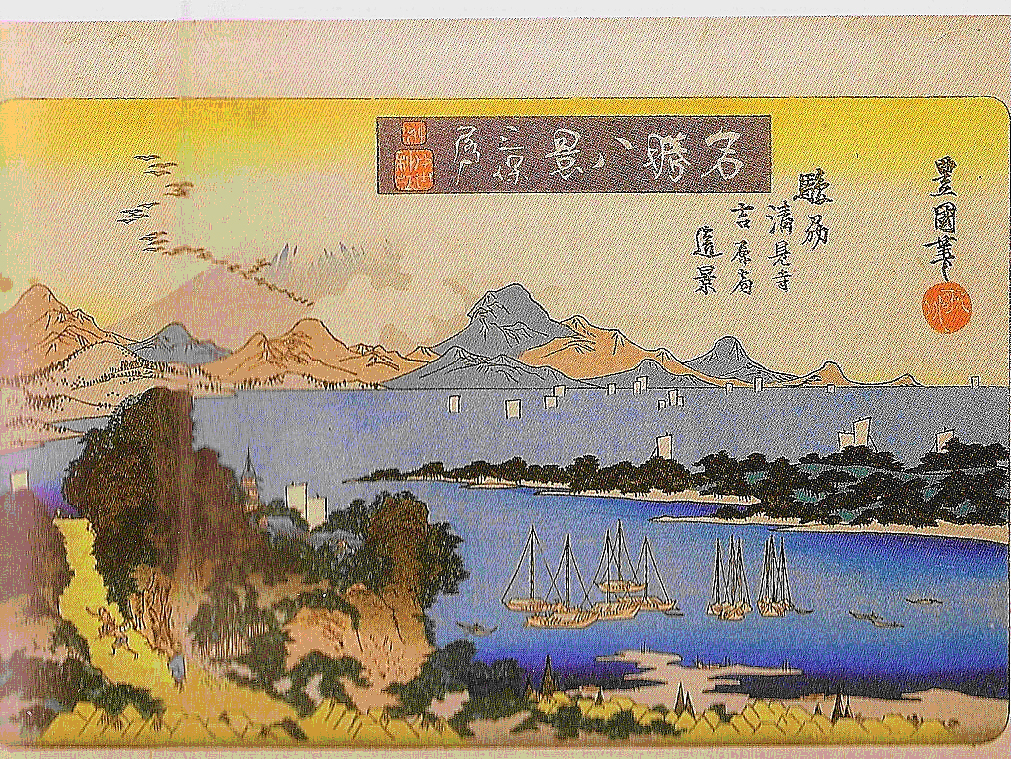
The last main section is devoted to warrior prints. I was particularly struck by this print of Benkei by Kunisada Utagawa:
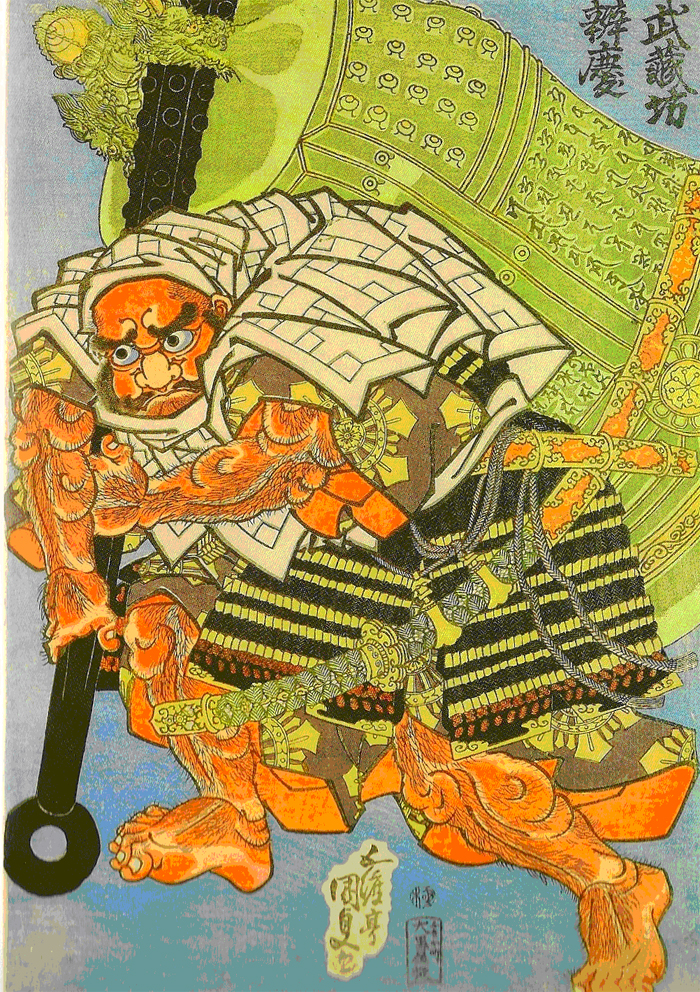
The final section is devoted to the colour woodblock print in the Meiji era and includes a portrait print of the Emperor Meiji as well as prints of the Russo-Japanese War. But there is nothing in this section about the fascinating Japanese prints of foreigners in the genre known as Yokohama-e. Sadly Dr Tinios has also had to omit discussion of another important element in Edo prints that of kachō (flowers and birds) prints. But if he had covered these genres he would have needed many more pages and the Museum press presumably wanted to limit the size of the book. A longer book would have cost more to produce and would have had to be more expensive. Limited though this book inevitably is in its coverage of ukiyo-e, it is a book which anyone interested in Japanese prints will want to have in their library. At £14.95 it is a good buy!

